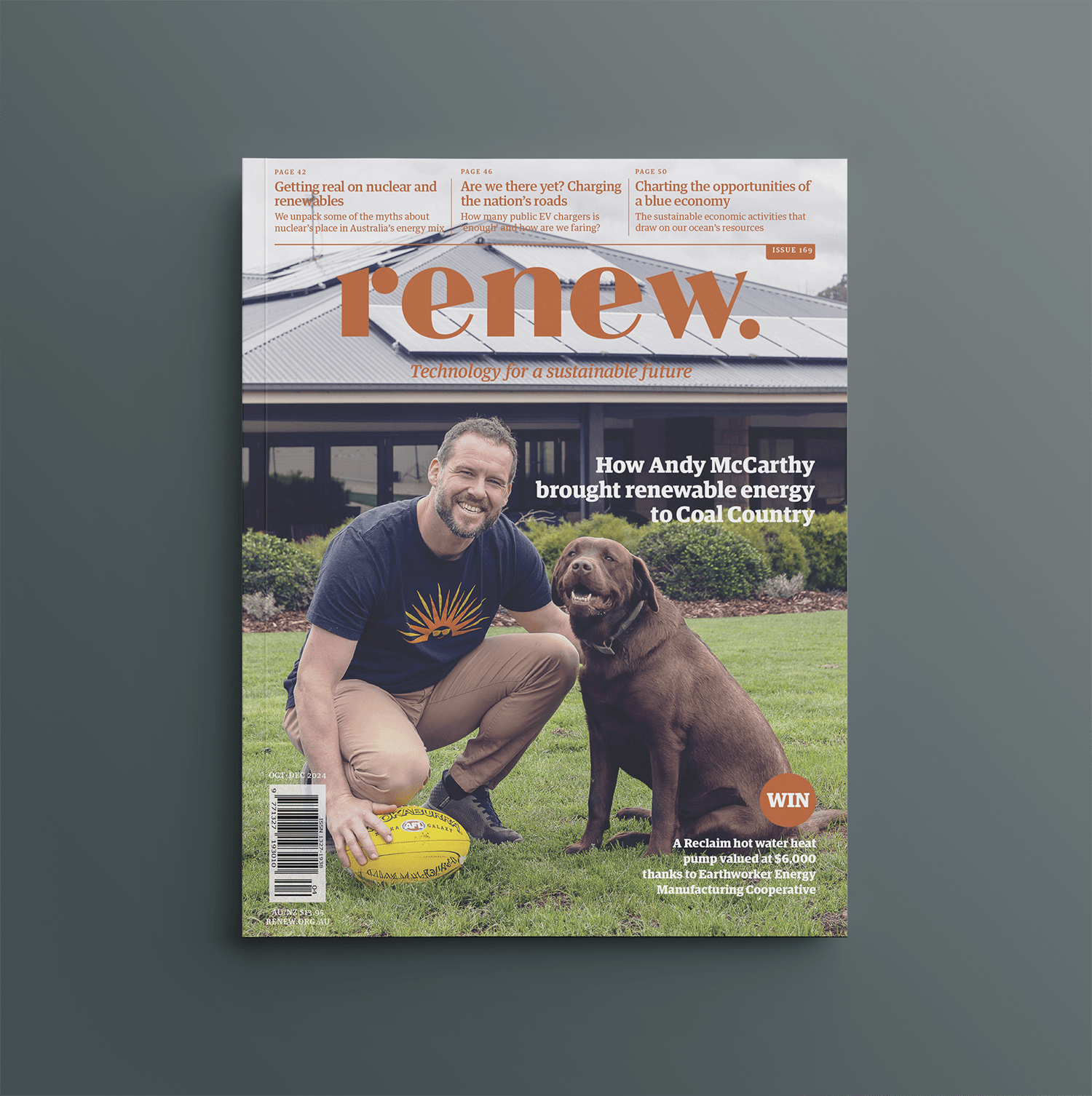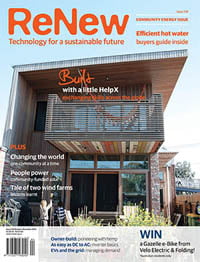ReNew Issue 129
Community energy special
This issue takes a tour of community solar projects happening in Australia right now, as well as community-owned microgrids, disruptive social innovations and what it takes to get a community wind farm up and running. It also includes our efficient hot water systems buyers guide, a look at microinverters, EVs and how they affect demand management, small hydro in Tassie, a DIY computer monitor from a dead laptop, making caravan fridges more efficient, building with hemp, the basics of inverters and much more!
Issue Contents:
Issue 129 October-December 2014 is out now! As always, ReNew comes overflowing with articles to satisfy both the technically and the not-so-technically minded. Regardless of whether your interest is photovoltaic cells, recycling, or even environmentally responsible building techniques, there is something for you in this issue.
ReNew 129 has ‘building sustainable communities’ as its focus. Inside you’ll find:
Building sustainable communities
Building with hemp
Kiara Pecenko visits this build-in-progress to talk to a couple who’ve found that hemp has everything you could want in a sustainable building material.
How EVs affect demand management
Marcus Brazil and Julian de Hoog explain how demand-side management can help alleviate issues with more EVs on the grid.
River power
Dr Catriona McLeod reports on a project harnessing a large renewable resource, at a smaller scale, in Tasmania.
As easy as DC to AC: inverter basics
Almost all renewable energy systems use at least one inverter. But what exactly are they and how do they work? Lance Turner explains.
Microinverter potential
Passing fad or serious contender? Industry analyst Nigel Morris explores the common questions he gets asked about microinverters.
ATA and community energy
It’s an exciting time for community energy, and the ATA is proud to be a part of it. Craig Memery describes what the ATA is doing to help community energy projects get going.
VNM—an important TLA!
Mark Byrne explains why virtual net metering may be an important TLA (three letter acronym) in the community energy arena.
Community-owned microgrids
Tosh Szatow explores community ownership of microgrids: the challenges and solutions.
Community solar
Taryn Lane from Embark, a community energy ‘wiki’, surveys the ever-growing field of community solar projects in Australia.
Energising rural communities
This community energy project in Cowra has the potential to be a blueprint for revitalising rural towns, writes Robyn Deed.
Tale of two wind farms
What does it take to get a community wind farm up and running? Andrew Woodroffe looks at a couple of projects.
Making money when the sun shines
The ATA’s new tool for calculating the economics of solar installations can use half-hourly consumption and insolation data to give a much more accurate view of the benefits. Andrew Reddaway explains.
Renovating with HelpX
Kiara Pecenko explores the world of HelpX and how one Melbourne household has used it to help run their life and their renovation.
Changing the world
Samuel Alexander considers just how far community action can go to help build a more sustainable future.
Learning for the future
Mischa Vickas investigates the renewable energy courses on offer and the opportunities available in our mini-guide.
Efficient hot water buyers guide
We show you how solar and heat pump hot water systems work, what’s available and how to choose one to best suit your needs.
Winter Energy Challenge
And the winner is… Find out how ReNew readers are reducing their energy use in winter, and the winning entry.
Fridges for caravans
Collyn Rivers looks at simple ways to improve the performance of fridges in caravans—particularly important when they’re running off batteries.
Reuse before recycling
Lance Turner explains how he made good (re)use of a screen from a dead laptop.
The Pears Report
Alan Pears considers the interesting future for energy providers and energy efficiency in Australia, and globally.
Member profile: the environmental advocate
Nick Towle and his wife Michelle have found that real-life examples (including their own ‘eco-bling’) are the most powerful way to initiate change in their local community, writes Emily Braham.


